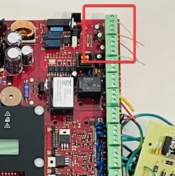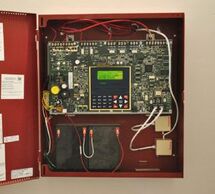Phone Line (POTS) Monitoring
Monitoring fire alarm systems and other types of safety and security systems via the PSTN (Public Switched Telephone Network) is a technology that originally replaced the older city tie style monitoring. The idea of using analog phone lines for fire panels has been around for many years, but in a world where we are moving away from copper, the price of a copper phone line cost more and more, and POTS monitoring is being replaced with other technologies. In the US copper lines only remained due to federal mandates for telecom companies to provide them as a service to the customers. After FCC Forbearance Order 19-72A1 allowed US telecom companies to abandon their copper lines and stop offering POTS as a service, they essentially have become non-existent. Any existing analog phone lines are in some simulated, either at a modem on the property, or farther down the lines e.g. at the pedestal.
Phone line monitoring is pretty interesting, and it has two key components. There is the Universal Digital Alarm Communicator Transmitter (UDACT) and the Digital Alarm Communicator Receiver (DACR). The UDACT makes a call which is received by the DACR automatically. This signal works similar to a fax line, as it is data transmission over the phone lines. When the data is received by the DACR, the central station receiver will convert that into a human readable format that will show up on a dispatchers computer, in which they can dispatch the fire department, and contact anyone on the monitoring account.
Reporting Formats
Different panels and central station receivers use different reporting formats (methods of sending and receiving data to and from a central station.)
Common reporting formats include:
• Ademco Contact ID (CID) - Common industry standard which uses DTMF to send data to the central station.
• SIA
• Pulse (4+2, 3+2, extended) - Pulse sends data by pulsing the phone line like an old rotary phones, it essentially is going on and off hook very quickly in a specific order.
• Modem IIIa2 - Bosch/Radionics proprietary format
Older formats
Some older formats include:
• ITI Modem format- A modem based format that is capable of programming panels via a CS-4000 Central station receiver.
• FBII SuperFast - DTMF based format made by Honeywell.
• Radionics BFSK - FSK based format made by Radionics that can transmit a 3 digit account number and a report code. faster than most pulse formats.


10-digit dialing requirements
In 2020, the FCC adopted a mandate for 10-digit dialing (area code + telephone number).[1] This means all systems would need to be reprogrammed for 10-digit dialing or else they would no longer be able to report. A notable instance was when William Fox Elementary School in Richmond, Virginia burned down, the panel failed to report because the panel did not have the 804 area code programmed and only the 7-digit number.[2] The alarm was only reported by a witness.
- ↑ https://wrighttownshipottawami.gov/wp-content/uploads/2022/08/Ten-digit-dialing.pdf
- ↑ https://www.wtvr.com/news/problem-solvers/problem-solvers-investigations/richmond-fox-fire-panels-schools-may-31-2022#:~:text=Richmond%20Alarm%20told%20RPS%20the%20panel%20at%20Fox%20needed%20to%20be%20reprogrammed%20with%20the%20804%20area%20code%2C%20but%20they%20would%20have%20to%20call%20another%20company%20to%20do%20it.

